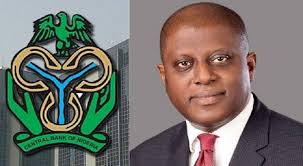On the back of tightening stance by the Central Bank of Nigeria (CBN), average prime lending rate to bank customers in Nigeria closed June 2025 at 18.19 per cent from 17.96 per cent in May 2025.
The Monetary Policy Committee (MPC) of the CBN retained Monetary Policy Rate (MPR) at 27.50 per cent at its last meeting despite calls by manufacturers for gradual easing of benchmark rate.
So far in 2025, the highest average prime lending rate was 18.49 per cent, which was recorded in January 2025.
The prime lending rate is the interest rate that banks charge their most creditworthy customers, usually large corporations and it serves as a benchmark for many other loans, including personal and business loans.
In Nigeria, the prime lending rate in the banking sector is influenced by monetary policy, inflation, liquidity in the banking system and economic conditions.
Nigeria’s banking sector’s average prime lending rate reached an all-time high of 19.66 per cent in November 2009 and a record low of 11.13 per cent in March 2021.
The steady increase in MPR reflected in the average prime lending rate last year as the CBN intensified its effort to tackle inflation rate and stabilize the local currency at the foreign exchange market.
The first hike in MPR was from 18.75 per cent to 22.75 per cent, the second to 24.75 per cent, the third to 26.25 per cent, the fourth to 26.75 per cent and recently 27.25 per cent in the September 2024 Monetary Policy Committee (MPC) meeting.
MPR thus moved to 27.50 per cent in November 2024 with the average prime lending rate jumping to 18.39 per cent in November 2024 to eventually closing last year at 18.56 per cent.
The increases, totalling 875 basis points in MPR since Mr. Olayemi Cardoso’s appointment, have been driven by efforts to tackle the country’s persistent inflation challenges, which include high core and food inflation.
An investigation by THISDAY showed that the increase in MPR impacted on banks average prime lending to their customers in June 2025.
According to the CBN’s Banks’ deposit and lending rates data, Wema bank’s general sector average prime lending rate rose to 32.50 per cent in June 2025. The reported 32.50 per cent was the highest in the banking sector in the period under review.
Following Wema Bank was Unity Bank with 32 per cent and FCMB with 31 per cent average prime lending rate in June 2025. The likes of Alpha Morgan Bank, Fidelity Bank, Keystone Bank, and Parallex Bank closed June 30, 2025 with average prime lending rate at 30 per cent, respectively.
Analysts attributed the increase in average prime lending rate to the hike in MPR and severe macroeconomic challenges.
Speaking, the Chief Research Officer, InvestData Consulting Limited, Mr. Omordion Ambrose said, “Businesses need a lot of credit facilities to survive, but in an environment where the lending rate is astronomical, many enterprises, especially small and medium-scale, might find it extremely difficult to survive as their products will remain uncompetitive and the cost of production and the sale prices to consumers will remain high.”
He added that, “A double-digit in interest rate slows down productivity, as manufacturers struggle to keep machinery in operations and pay salaries. Those who look forward to borrowing for expansion and production will have to shelve such ideas in the face of the high cost of accessing funds.”
Investment Banker & Stockbroker, Mr. Tajudeen Olayinka stated that banks review their lending rates on a regular basis, subject to their respective cost of funds and the direction of MPR, not necessarily using MPR as a distinct value.
According to him, the MPR signals to them the direction of interest rate in the market and the price they will pay if they have to borrow from or lend to CBN.
“Therefore, their deposit mix, which includes idle customers’ deposits, determines what their weighted average cost of funds would be. They then factor in the signal from MPR, to enable them to arrive at their various prime lending rates which are usually reserved for their prime customers,” he said.

